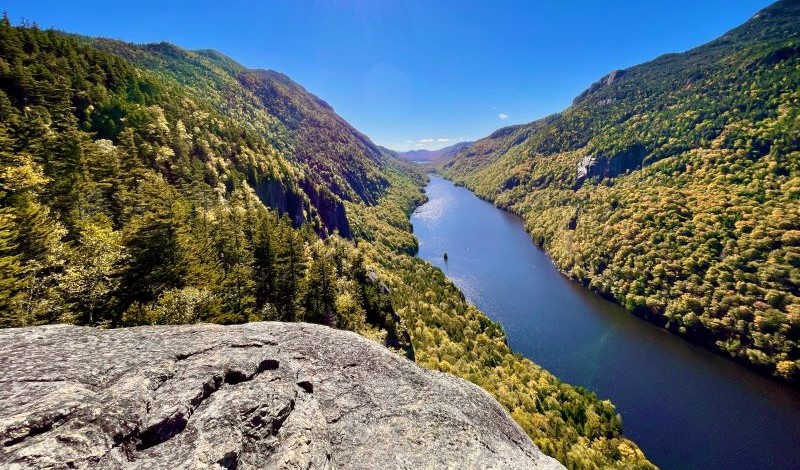
Scholar argues that policymakers should consider the needs of those living around protected wilderness areas.
There are 840 million acres of public land in the United States—more than one-third the entire land mass of the country—including federal, state, and local parks. Over 303 million of these acres are protected from development for commercial and residential uses.
Despite the abundance of public and protected areas in the United States, 80 percent of the U.S. population lives in urban areas—far from most of America’s public land—and rarely, if ever, interact with protected lands. The disconnect between those with the political power to designate protected land and those who live in and around it can cause conflict. An especially dramatic conflict occurred in 2014 when Cliven Bundy led an armed protest against a Bureau of Land Management decision preventing local ranchers from grazing cattle on federally protected land.
How should public land managers balance the conservation goals of a largely removed electorate and the social and economic desires and customs of those who live in and around protected lands?
In a forthcoming article, Edward W. De Barbieri of the Albany Law School argues that protecting public lands can create friction between conservationists and poorer residents who live in and around protected landscapes. Using New York’s Adirondack Park as an example, De Barbieri explains how designating a tract as protected land can significantly restrict the economic and social activity of local residents.
De Barbieri concludes that relaxing some regulation of public lands may advance conservation goals long term by allowing for responsible economic development and community building in economically disadvantaged communities.
America has a long history of protecting public land and resources. Congress created the first national park, Yellowstone, in 1872, and federal, state, and local governments have designated over 51,018 areas as protected in the United States today.
Despite this tradition of protected landscapes, tensions persist among land management agencies tasked with carrying out conservation mandates and local communities. For example, local hunters voiced their dissatisfaction with the Colorado Parks and Wildlife Commission after it cancelled the spring mountain lion hunting season midway through due to protests from animal rights activists. In the Adirondacks, locals have battled state land managers for years about expanded roadway access.
According to De Barbieri, conflicts between locals and land managers stem from long-standing debates pitting economic development and environmental preservation against each other. He argues, however, that disputes between conservationists and local residents of protected areas differ from traditional environmental debates because local residents typically have less wealth and less political power than their opposing urban conservationists.
Those visiting the Adirondacks and other protected lands benefit from the land’s preservation because it enhances their recreational experiences and vistas, De Barbieri explains. This preservation and visitation, however, harms local residents in two ways, he argues.
First, De Barbieri observes that by frequently visiting and often buying second homes or short-term rentals, visitors to public land increase the cost of living in the area beyond the means of local residents. For example, 130,000 people live in Adirondack Park year round with a median household income between $55,000 and $68,000 annually. Over 12 million people, however, visit Adirondack park every year, typically from much wealthier surrounding areas in New York. The average cost of a home in the Adirondacks has increased by 60 percent over the past five years and is currently well above what most Adirondack permanent residents can afford.
Second, De Barbieri observes that when a government designates a tract as protected, it significantly limits the economic and social freedoms of those living in and around that tract. For example, New York State designated the Adirondacks as “forever wild,” prohibiting almost all logging and other development in and around the park. And so while local residents face the pressure of increasing costs of living, the government has limited employment opportunities to those that it has determined will not impact the ecological integrity of the park.
De Barbieri concludes that designating a tract as protected excludes local populations by increasing their costs of living while limiting their options for gainful. By regulating the activity of those living in and around protected areas, majority urban populations constrain the rights of minority rural populations for the urban population’s enjoyment of protected lands, he argues. De Barbieri observes that indigenous populations are particularly vulnerable to this form of exclusion as land managers heavily regulate native customs and traditions on protected land.
Rather than not creating protected areas, De Barbieri argues that policymakers could best serve the interests of those living in and around protected areas by relaxing certain regulations. Specifically, De Barbieri argues that policymakers should focus on permitting and encouraging economic activity in and around protected areas that does not hurt the ecosystem while providing economic opportunity for local residents. By promoting ecologically friendly economic activity, policymakers can actually better serve the conservation goals of protected landscapes by preventing locals from engaging in illegal economically activities and encouraging better relations between local residents and land managers.
For example, De Barbieri explains how states could invest in ecotourism to help local populations and protected lands. Although he acknowledges that many protected areas already promote ecotourism, De Barbieri argues that states could do more to support local residents in ecotourism. Rather than conducting guided adventures exclusively through the local land management agencies, states could allow more private individuals to conduct ecotourism activities in parks, he claims.
Furthermore, De Barbieri argues states could widen the type of ecotourism activities permitted in and around parks as well. In Adirondack Park, for example, he claims that New York could amend its regulations and permit the use of off-road vehicles in and around the park. De Barbieri posits that responsible off-road operations would not threaten the Park’s resources or other recreational opportunities and would increase the economic options for local residents.
De Barbieri concludes that unless policymakers loosen the regulations placed on permanent residents of areas in and around protected areas, conflicts between land managers and economically depressed locals will persist.



